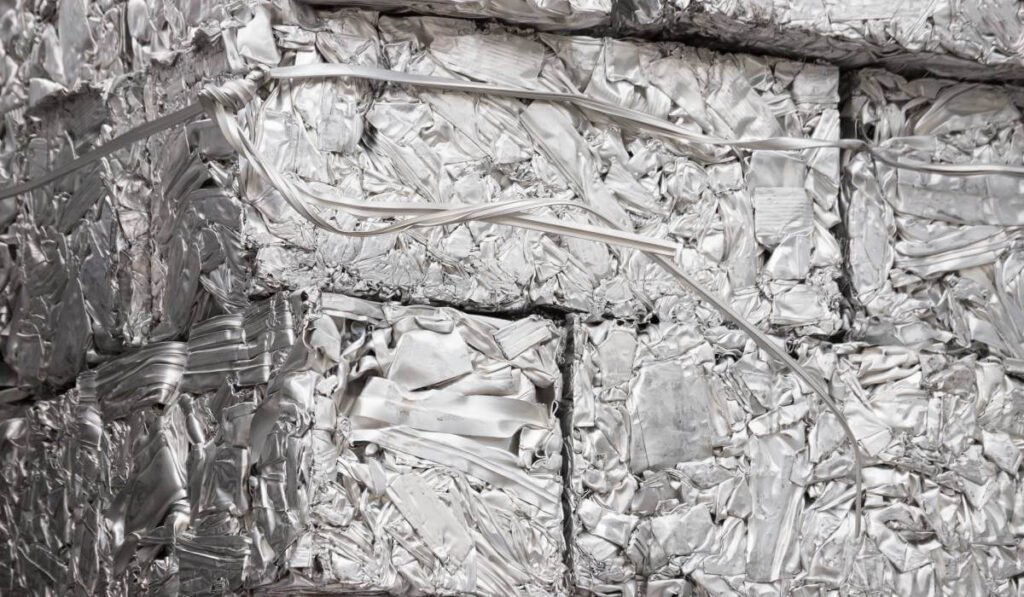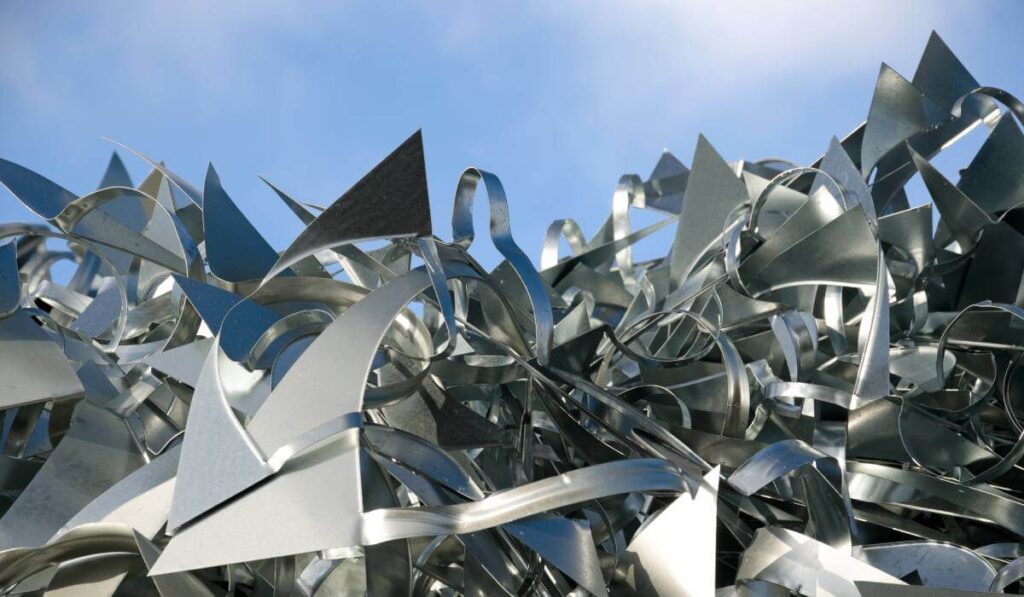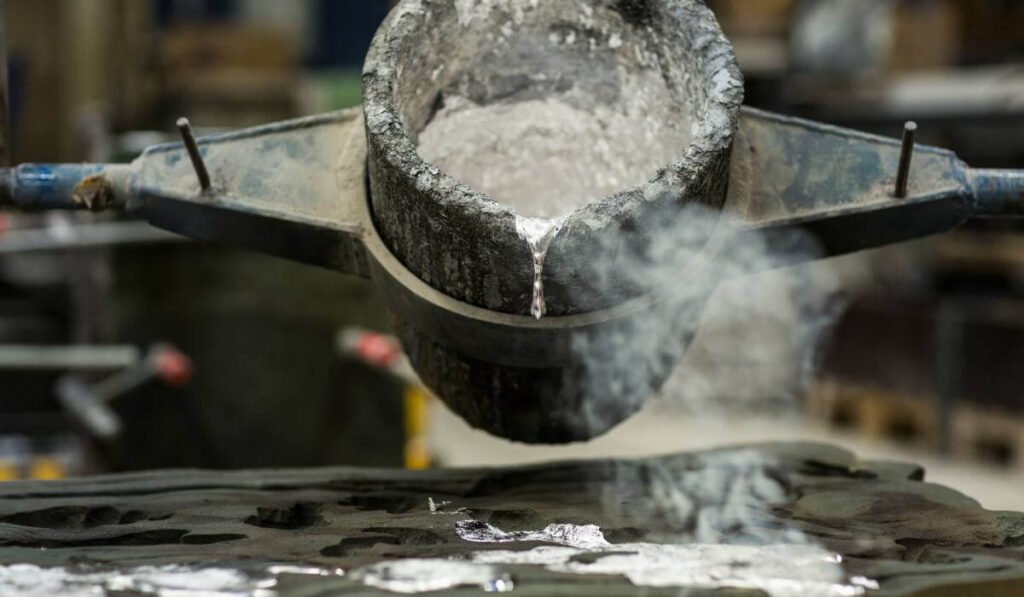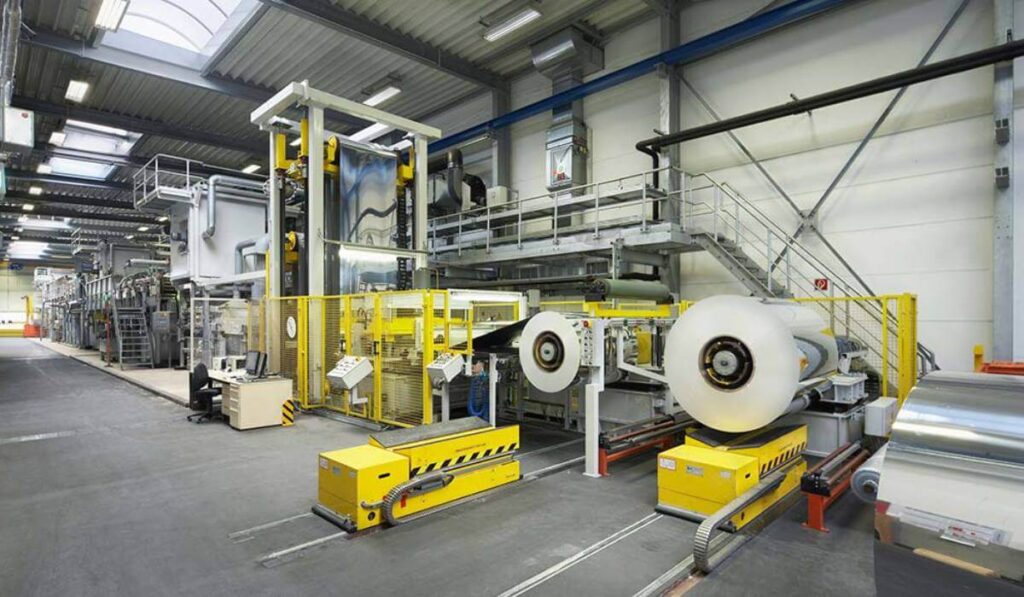The impact of recycled aluminium on carbon footprint reduction
In the fight against climate change, reducing carbon footprint has become a priority for industries and consumers alike. Among many materials that contribute to our everyday products, aluminium stands out for its versatility, durability and, most importantly, its endless potential for recycling. Unlike many materials that degrade over time, aluminium can be recycled indefinitely without losing quality.
Unlocking the environmental benefits of aluminium
In this article, we explore how using recycled aluminium significantly reduces carbon footprint, highlighting the environmental and economic benefits while diving deeper into how, at Alanod, we’re adopting more sustainable practices.
- Is aluminium recyclable?
- How many times can aluminium be recycled?
- Why should aluminium be recycled?
- How is aluminium recycled?
- How do we use recycled aluminium at Alanod?

Is aluminium recyclable?
In short, yes, aluminium is 100% recyclable. In fact, according to statistics from the International Aluminium Institute, over 30 million tonnes are recycled every year worldwide, making it one of the most recycled materials. But what makes aluminium so recyclable?
- It only takes 5% of the energy that would have been used to produce the aluminium to recycle it.
- It doesn’t corrode, which means it doesn’t need to be treated before being recycled, helping cut costs.
- It’s made from atoms bonded in a crystal structure, meaning it can be melted and reformed without using its properties.
How many times can aluminium be recycled?
Aluminium is known as a permanent material, which means it can be recycled indefinitely without degrading in quality. Not only this, but during the recycling process, aluminium can be transformed into a totally different object; for example, material that was once used in an old building facade can be repurposed for use in the automotive sector. This continuous reinvention of aluminium means we will never run out of the material.

Why should aluminium be recycled?
Recycling aluminium aligns perfectly with the principles of our environmental responsibilities and plays a key role in creating a more sustainable future. Some of the key driving forces include:
Lowers C02 emissions: Recycling aluminium uses 90-95% less energy than producing it from raw materials, which leads to a substantial reduction in greenhouse gas emissions. For example, recycling one tonne of aluminium will save nine tonnes of carbon dioxide emissions, the equivalent of driving over 3,000 miles.
Conserves natural resources: Aluminium is derived from bauxite ore, a non-renewable resource. Recycling aluminium reduces the need for mining, deforestation and habitat destruction, preserving natural landscapes and biodiversity.
Offers financial benefits: Recycling aluminium is cheaper than producing new aluminium from bauxite, particularly as there is no need for mining. This cost savings can benefit industries and consumers alike. Not only this, but the more we recycle, the more jobs are created in collecting, processing, and repurposing materials.
Reduces waste disposal: If not recycled, aluminium products can take hundreds of years to decompose in landfills. Recycling prevents waste from accumulating, helping to reduce the release of harmful substances.
Encourages a circular economy: Recycling aluminium contributes to a circular economy, where materials are kept in use for as long as possible, extracting maximum value and minimising waste.

How is aluminium recycled?
The process of recycling aluminium is far more efficient than manufacturing from raw; the steps are as follows:
Step 1: Collection: Aluminium products from households, businesses and industrial sources are collected and sorted to remove non-aluminium materials, ensuring that only aluminium enters the recycling process.
Step 2: Cleaning and shredding: The sorted aluminium is shredded into small pieces to increase the surface area and make it easier to melt. These are then cleaned to remove contaminants such as paint and coatings.
Step 3: Melting and purification: Aluminium is placed in a large furnace and heated above its melting point, generally around 750°C, converting it into a molten state. The molten aluminium may then undergo further purification to remove any remaining impurities.
Step 4: Casting or extrusion: Depending on the end product, the molten aluminium is either cast into large blocks called ingots or put through extrusion to create other shapes, such as tubes or bars.
Step 5: Production: The recycled aluminium is sent to manufacturing plants to be transformed into the end product, whether that be cladding, automotive parts or solar panels, to name just a few.

How do we use recycled aluminium at Alanod?
As a global company, we make a conscious effort to adopt sustainable practices during our production processes. As such, we have put the following in place:
- Many of our products are manufactured with up to 90% recycled aluminium, which can be tailored to meet your product requirements.
- For the past 13 years, all of our manufacturing operations have been powered by renewable energy sources.
- We have implemented procedures that allow both our products and processes to meet environmental legislation, including REACH, RoHS, WEEE, and EoLV.
- Our environmental management system is ISO 14001:2015 certified, and our energy management system is ISO 50001:2011 certified.

A powerful way to reduce our carbon footprint
By recycling aluminium, we not only conserve energy and resources but also significantly lower greenhouse gas emissions. And, as industries and consumers become more aware of the environmental benefits of aluminium, the impact on carbon footprint reduction will only grow stronger.
As a business driving towards a more sustainable future of aluminium production, we’re always more than happy to discuss environmental requirements with clients before placing an order. Our team have decades of experience working with industries across the globe and would love to speak with you in more depth about how our supply services can benefit your business.

